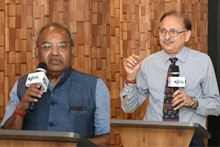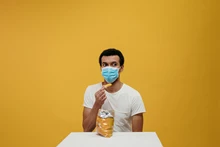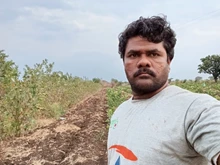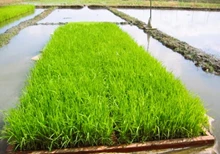
Food wastage is a big problem these days. Food is wasted due to short shelf life of few fruits and vegetables. They get spoiled quickly and create problems like pathogens and microbes.
LSU AgCenter food scientists are working on ways to extend the shelf life of food products, which will help reduce waste. LSU AgCenter reporter Craig Gautreaux has the story from the LSU campus.
Ultraviolet light (UV) light holds considerable promise in food processing as an alternative to traditional thermal processing. Its applications include pasteurization of juices, post lethality treatment for meats, treatment of food contact surfaces and to extend the shelf-life of fresh produce. Designs of UV reactors that were tested in the author's lab for juice and apple cider treatment are discussed. Future research needed to extend the range of UV light applications in food processing industry is presented.

Preservation and Shelf Life Extension focuses on the basic principles of ultraviolet light technology as applied in low-UV transmittance treatments of food fluids and solid foods. It describes the features of UV light absorption in food fluids and available commercial systems, and provides case studies for UV treatment of fresh juices, dairy products, wines, and beer.
The various continuous and pulsed UV sources and processing systems, as well as examples of specific treatments for fruits, vegetables, meat and poultry products.
-
Addresses preservation and shelf-life extension of foods and food plant safety improvement
-
Explores non-thermal and non-chemical alternatives for preservation and shelf-life extension of fluid foods, drinks and beverages, and for solid foods
-
Written by an internationally recognized expert in ultraviolet light, high hydrostatic pressure processing, and microwave heating
When people mention UV light, they often only talk about its damaging qualities – but we benefit from UV radiation in different ways. UV light impacts numerous metabolic processes in people, plants and animals. But our digital way of life means we’re spending more time indoors and thus don’t see the daylight all that much. So it’s even more important to step outside more often and take part in outdoor activities to make ourselves feel good and stay healthy.

The use of ultra violet (UV) light is well established for water treatment, air disinfection and surface 20 decontamination. With the growing negative public reaction over chemicals added to foods, UV light holds considerable promise in food processing. As a physical preservation method, UV irradiation has a positive consumer image.
The U.S. Food and Drug Administration 25 (FDA) and US Department of Agriculture (USDA) have concluded that the use of UV irradiation is safe. In 2000, the FDA approved UV light as alternative treatment to thermal pasteurization of fresh juice products (US FDA, 2000). The performance criterion defined by FDA for 30 fruit and vegetable juice processing is a 5-log10 reduction in the number of the target pathogen of concern (US FDA, 2000).
In addition, the definition of ‘‘pasteurization’’ for foods was recently revised and now includes any process, treatment, or combination thereof, which is 35 applied to food to reduce the most microorganism(s)of public health significance. The processes and technologies examined in the above mentioned report include UV irradiation as an alternative to heat that can be used for pasteurization purposes. 40This paper provides a general review of the applications and efficacy of UV light treatment of foods.
Consideration will be given to research that describes UV treatment as an alternative preservation method for solid and liquid foods. In addition, the emphasis is given 45to the future research required to extend the range of UV light applications in the food processing industry.
UV light is used in the food industry for disinfecting surfaces. Applications include decontamination of surfaces 50of equipment in bakeries, cheese and meat plants, as an adjunct to usual cleaning and sanitizing practices, and for decontamination of conveyor surfaces and packaging containers such as boxes, caps, bottles, cartons, tubes, films and foils. Despite the efficacy of UV light to disinfect smooth 55surfaces, there are relatively few applications of this technology in the food processing industry. The restricted range of commercially available equipment for disinfecting solids may contribute to its limited use. In addition, most kinetic data of microbial inactivation were obtained in suspension in 60aqueous media or air. These data are of limited use in predicting the surface disinfection rate. Since complex interactions may occur between microorganisms and surface materials, such as shielding effects from incident UV, efficacy of UV light depends on surface structure or topography. 65The recent outbreaks of Listeria in Ready-To-Eat (RTE) meats prompted the USDA to implement a regulation to control Listeria in facilities producing RTE products (FSIS, 2003). Alternatives 1 and 2 of this regulation include the use of a post lethality treatment and/or a 70antimicrobial agent together or separately to reduce or eliminate the bacterium on the product.










